第210章 XXIX.(16)
408. Roderigh Vich Alpine dhu. "Besides his ordinary name and surname, which were chiefly used in the intercourse with the Lowlands, every Highland chief had an epithet expressive of his patriarchal dignity as head of the clan, and which was common to all his predecessors and successors, as Pharaoh to the kings of Egypt, or Arsaces to those of Parthia. This name was usually a patronymic, expressive of his descent from the founder of the family. Thus the Duke of Argyll is called MacCallum More, or the son of Colin the Great. Sometimes, however, it is derived from armorial distinctions, or the memory of some great feat; thus Lord Seaforth, as chief of the Mackenzies, or Clan-Kennet, bears the epithet of Caber-fae, or Buck's Head, as representative of Colin Fitzgerald, founder of the family, who saved the Scottish king, when endangered by a stag. But besides this title, which belonged to his office and dignity, the chieftain had usually another peculiar to himself, which distinguished him from the chieftains of the same race. This was sometimes derived from complexion, as dhu or roy; sometimes from size, as beg or more;at other times, from some peculiar exploit, or from some peculiarity of habit or appearance. The line of the text therefore signifies, Black Roderick, the descendant of Alpine.
"The song itself is intended as an imitation of the jorrams, or boat songs, of the Highlanders, which were usually composed in honor of a favorite chief. They are so adapted as to keep time with the sweep of the oars, and it is easy to distinguish between those intended to be sung to the oars of a galley, where the stroke is lengthened and doubled, as it were, and those which were timed to the rowers of an ordinary boat" (Scott).
410. Beltane. See on 319 above.
415. Roots him. See on i. 142 above.
416. Breadalbane. The district north of Loch Lomond and around Loch Tay. The seat of the Earl of Breadalbane is Taymouth Castle, near the northern end of Loch Tay.
For Menteith, see on i. 89 above.
419. Glen Fruin. A valley to the southwest of Loch Lomond. The ruins of the castle of Benuchara, or Bannochar (see on 422 just below), still overhang the entrance to the glen.
Glen Luss is another valley draining into the lake, a few miles from Glen Fruin, and Ross-dhu is on the shore of the lake, midway between the two. Here stands a tower, the only remnant of the ancient castle of the family of Luss, which became merged in that of Colquhoun.
422. The best of Loch Lomond, etc. Scott has the following note here:
"The Lennox, as the district is called which encircles the lower extremity of Loch Lomond, was peculiarly exposed to the incursions of the mountaineers, who inhabited the inaccessible fastnesses at the upper end of the lake, and the neighboring district of Loch Katrine. These were often marked by circumstances of great ferocity, of which the noted conflict of Glen Fruin is a celebrated instance. This was a clan-battle, in which the Macgregors, headed by Allaster Macgregor, chief of the clan, encountered the sept of Colquhouns, commanded by Sir Humphry Colquhoun of Luss. It is on all hands allowed that the action was desperately fought, and that the Colquhouns were defeated with slaughter, leaving two hundred of their name dead upon the field. But popular tradition has added other horrors to the tale. It is said that Sir Humphry Colquhoun, who was on horseback, escaped to the Castle of Benechra, or Bannochar, and was next day dragged out and murdered by the victorious Macgregors in cold blood. Buchanan of Auchmar, however, speaks of his slaughter as a subsequent event, and as perpetrated by the Macfarlanes. Again, it is reported that the Macgregors murdered a number of youths, whom report of the intended battle had brought to be spectators, and whom the Colquhouns, anxious for their safety, had shut up in a barn to be out of danger. One account of the Macgregors denies this circumstance entirely;another ascribes it to the savage and bloodthirsty disposition of a single individual, the bastard brother of the Laird of Macgregor, who amused himself with this second massacre of the innocents, in express disobedience to the chief, by whom he was left their guardian during the pursuit of the Colquhouns. It is added that Macgregor bitterly lamented this atrocious action, and prophesied the ruin which it must bring upon their ancient clan.
...
"The consequences of the battle of Glen Fruin were very calamitous to the family of Macgregor, who had already been considered as an unruly clan. The widows of the slain Colquhouns, sixty, it is said, in number, appeared in doleful procession before the king at Stirling, each riding upon a white palfrey, and bearing in her hand the bloody shirt of her husband displayed upon a pike. James VI. was so much moved by the complaints of this 'choir of mourning dames,' that he let loose his vengeance against the Macgregors without either bounds or moderation. The very name of the clan was proscribed, and those by whom it had been borne were given up to sword and fire, and absolutely hunted down by bloodhounds like wild beasts. Argyll and the Campbells, on the one hand, Montrose, with the Grahames and Buchanans, on the other, are said to have been the chief instruments in suppressing this devoted clan. The Laird of Macgregor surrendered to the former, on condition that he would take him out of Scottish ground. But, to use Birrel's expression, he kept 'a Highlandman's promise;' and, although he fulfilled his word to the letter, by carrying him as far as Berwick, he afterwards brought him back to Edinburgh, where he was executed with eighteen of his clan (Birrel's Diary, 2d Oct.